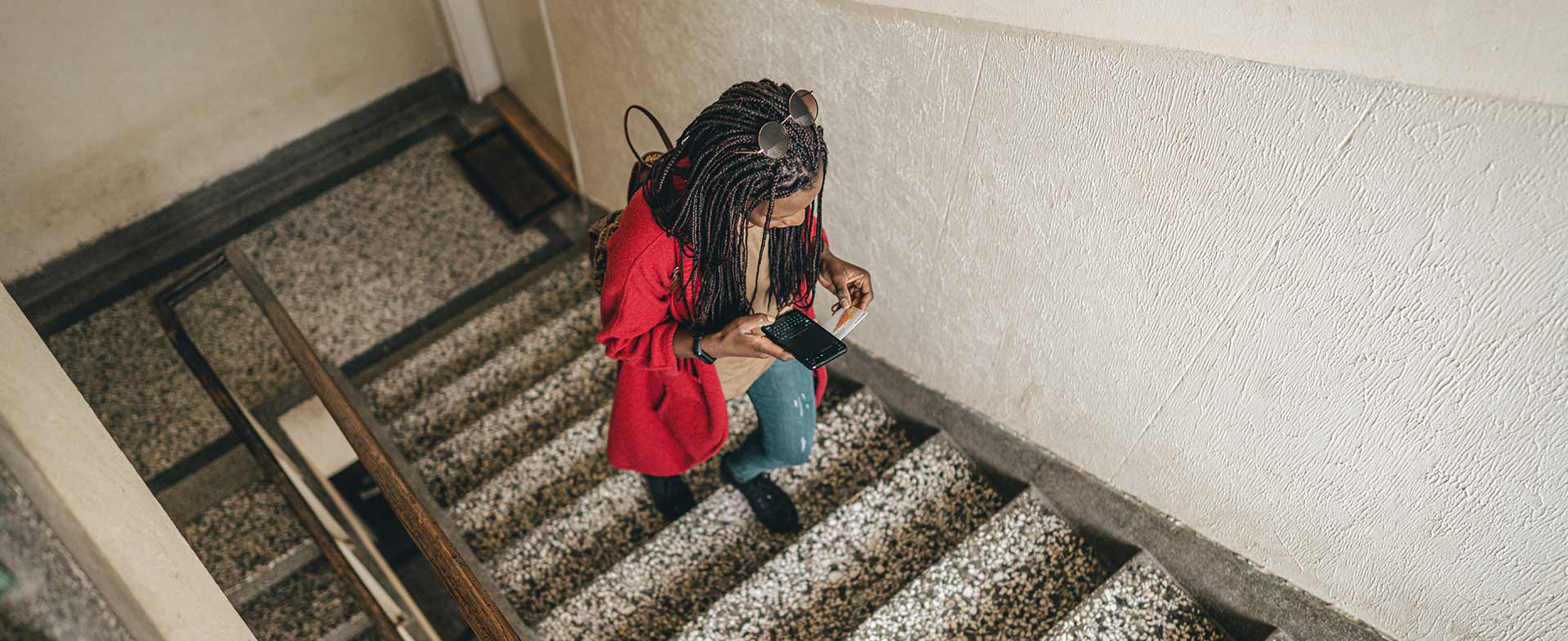Are you sitting for hours a day but feeling too busy to exercise? Try taking the stairs. A recent study found that walking up at least five flights of stairs each day reduces your risk for heart disease, stroke and other chronic conditions.
“You don’t need to go to the gym to exercise. Moving with snack-sized workouts, like taking the stairs, translates into better heart and overall health. You’ll also reduce your risk for other health conditions such as dementia and Alzheimer’s,” says Dennis Kerrigan, Ph.D., a senior clinical exercise physiologist at Henry Ford Health.
How Taking The Stairs Boosts Your Health
When you climb stairs, your heart pumps blood faster to carry oxygen to your muscles and support your movement. The more flights you take, the greater the benefit. That’s because any physical activity that raises your heart rate and breathing boosts your health by:
- Improving heart function: Exercise reduces the stress on your heart and cardiovascular system. This improves your circulation and reduces the risk of heart disease and stroke.
- Reducing the risk of chronic diseases: Increased activity leads to a lower risk of more than 40 chronic conditions, including high blood pressure (hypertension), diabetes, high cholesterol, obesity and certain cancers.
- Improving brain health and mood: Physically active people are less likely to develop dementia or Alzheimer’s. Exercise can also help manage stress and anxiety.
- Preventing injuries: Beginning at age 30, our muscle mass declines. Exercise improves muscle strength and bone health, reducing the risk of falls or other injuries. Regular exercise helps people live a more active and independent lifestyle.
How To Fit Exercise Into Your Daily Routine

“Think of your physical fitness level as a vital sign for your health. Research has shown that fitness predicts long-term health as well as, or better than, conditions like obesity and diabetes,” says Dr. Kerrigan. “That’s why creating a daily exercise habit is important.”
Taking the stairs daily at work, along with other planned activities, can help you reach the 150 minutes of moderately intense exercise each week recommended by the American Heart Association (AHA).
Climbing stairs is also a weight-bearing exercise that can help prevent bone loss as we age. However, just taking the stairs a few days per week does not replace doing some planned exercise, especially strength training. “Many people focus on cardio exercises when they workout. But strength training is also essential. It builds strong muscles and bones while lowering blood pressure and blood sugar levels,” says Dr. Kerrigan.
See your doctor if you experience any unusual pain or shortness of breath with activity. If you have concerns about activity, your physician can advise you about which physical activities are safe based on your health.
Dr. Kerrigan recommends using these strategies for fitting exercise into your daily routine:
- Start low and small: When getting started, set a goal to do short exercise sessions throughout the day. Four 10-minute exercise sessions provide the same benefit as a 40-minute workout. Taking the stairs twice a day can count as two short workouts.
- Avoid overdoing it: Doing too much too soon can lead to overuse or recurring injuries. Take your current fitness level into account as you pick exercises. Listen to your body and give yourself time to adjust to new routines. If you get tired when climbing stairs, take a break between flights.
- Gradually increase your exercise pace: As your endurance and strength improve, taking the stairs should become easier. Over time, aim to exercise at your target heart rate. The “talk test” can help you determine if you’re working out hard enough. Exercise so your heart rate and breathing increase, but you can continue a conversation.
Taking the stairs is just one way to fit exercise into your day. Try starting the day with a brisk morning walk. Fit a game of pickleball in after work. “Short sessions of exercise that raise your heart rate add up to improve your health and wellness,” says Dr. Kerrigan.
Reviewed by Dr. Dennis Kerrigan, a clinical exercise physiologist who sees patients and does exercise research trials at Henry Ford Hospital.



